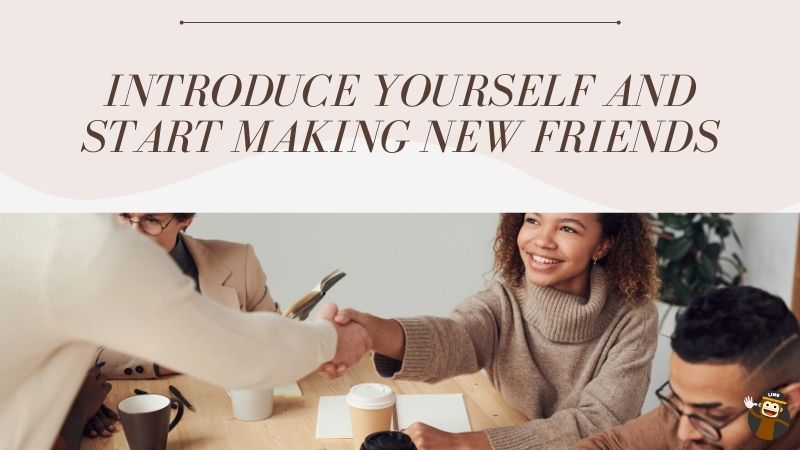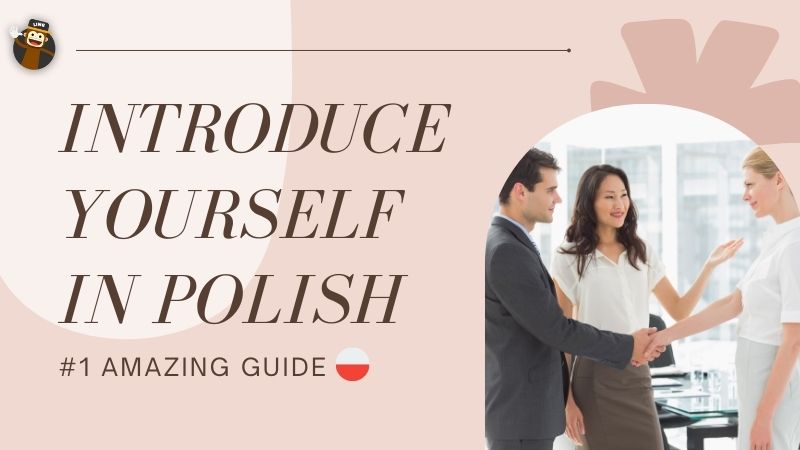Going to Poland isn’t the only reason you should know how to introduce yourself in Polish. Wherever you are, Polish people are everywhere! It wouldn’t hurt to know anything Polish, right?
Knowing the basics is one, but knowing how to introduce yourself properly is also something you need to keep in mind. Introducing yourself and how you do it is a reflection of your personality. One wrong move and their impression of you might be negative.
Whether it’s because of work, school, or leisure, knowing how to introduce yourself in a different language is fun if you have the right resources and material. Having said that, this article by the Ling app is for you! Enjoy your weekend and set your morning routine by using this post as a guide to learning Polish.
Let’s Learn How To Introduce Yourself In Polish

How To Greet People In Polish? Saying “Czesc!” Is Key
There are many ways to greet Polish people. However, you have to keep in mind that there are greetings used in a formal setting and words that you can use in an informal setting.
With this in mind, it will allow you to have a better grasp of their language, and it will help you more as you navigate through the Polish Language.
The most common way to greet someone formally in Polish is “Dzień dobry,” which literally means “Good day.” You can do this during the mornings and the afternoons. If you don’t know what greeting to use, if you should use a formal or an informal one, this is the best greeting.
During the nighttime, when you come across your Polish boss or perhaps a stranger, and you feel like greeting them, the most proper way to say it is “Dobry wieczór,” which literally means “Good evening.”
Here are more greetings that you can use in an informal setting or whenever you are with people that you already know, such as family and friends:
| Polish | English |
| Witam | Welcome |
| Czesc | Hi or Hello |
| Siema | It is more casual than “Czesc,” and it means “What’s up” or “Sup” |
| Hej | Hey |
Introduce Yourself And Start Making New Friends

Upon telling them your name, there is still a formal and informal way to do it. If you meet someone for the first time, keep this in mind to make a good impression.
When you tell a Polish person your name, in a formal setting, you can say, “Dień dobry! Nazywam się…” This means, “Good day! My name is…” Then you insert your name. When introducing yourself in a formal setting or when you don’t know what greeting to use, always use “Dień Dobry”. Keep in mind that when you introduce yourself formally, always state your full name too. You don’t want to have a disaster in speaking Polish when you’re making friends, right?
As for the informal setting, you can say “Czesc! Jestem…” which means “Hi! I am…” and then you can proceed with telling them your name. If you also want to know the name of the person you are talking to, you can ask them by saying “Jak masz na imię?” which means “What’s your name?”
Whenever you want to tell a Polish person that it is nice to meet them, there are various ways to do so, and there are also some things that you should consider aside from the way of speaking that is to be used.
When telling someone in Polish that it is nice to meet them, you have to consider the gender you speak to. At first, it really gets tricky and confusing, but it’s okay! You’ll definitely get the hang of it too. The way to say that it’s nice to meet them in Polish is “Miło mi pana poznać” if you talk to a man. However, if you talk to a woman, you can say, “Miło mi pania poznać.”
Can you see the difference? Check out the table below to understand it more:
| Polish | English |
| Miło mi pana poznać. | Nice to meet you (male) |
| Miło mi pania poznać. | Nice to meet you (female) |
| Miło mi! | Nice to meet you! (informal) |
| Czesc! Jestem… Miło mi! | Hi! I’m… Nice to meet you! (informal) |
| Dzień dobry! Nazywam się… Miło mi pania poznać! | Good day! My name is… Nice to meet you! (formal, female) |
| Dzień dobry! Nazywam się… Miło mi pana poznać! | Good day! My name is… Nice to meet you! (formal, male) |
Asking Them How They Are Today!

After greeting them and telling them about your name, you can proceed with asking them how they are. The most common way to say it is “Jak sie masz?” which means “How are you?”
However, there are more ways to say it casually besides “Jak sie masz?” You can hear it more often when you actually live in Poland. Check it down below:
| Polish | English |
| Jak tam? | How are you? (Informal) |
| Jak leci? | How are you? (Informal) |
| Co Tam? | How are you? (Informal) |
Assuming they also ask about how you are after introducing yourself, you can reply with “Czuję się dobrze,” which translates to “I feel good!” It is also important to shake the hand of the one you are speaking to firmly.
In their culture, it can be interpreted as a sign of respect. When you do so, don’t shake their hand in a flimsy manner because, as the Polish describe, it is like “holding a dead fish.”
Other Useful Words And Phrase In Polish
Now that we have already established the basics of how you’re going to introduce yourself in Polish, here are some phrases that can build your Polish vocabulary. These phrases will expand your understanding of the language and help you find yourself in Poland.
| Polish | English |
| Do widzenia | Goodbye |
| Proszę | Please |
| Dziękuje | Thank you |
| Czy mówisz po angielsku? | Do you speak English? (Informal) |
| Czy mówi pana po angielsku? | Do you speak English? (Informal,male) |
| Czy mówi pania po angielsku? | Do you speak English? (Informal, female?) |
| Nie mówię po polsku. | I don’t speak Polish. |
If you want to have a couple of more ‘conversation starters’ check out the table below with a couple of sentences that can help you with it!
| Polish | English |
| Skąd pochodzisz? | Where are you from? |
| Czy wszystko w porządku? | Are you okay? |
| Jestem studentką. | I am a student. |
| Jestem turystą. | I am a tourist. |
| Wyglądasz dobrze. | You look good. |
The Importance Of Introducing Yourself
It is important to know how to properly introduce yourself no matter what setting you are in because it reflects your personality. In Polish culture, Polish people are known to be relaxed and calm. They are very welcoming open-minded and will tend to their visitors. However, when you flip the other side of the coin, they are also serious and reserved, especially for the older generation.
Having said that, they are known to be very formal, especially when you meet them for the first time. Introducing yourself in Polish is in the thin line between being rude and courteous. How to do it properly, you ask?
There are many that claim to be the best app for learning Polish. Though it is useful to strike the conversation first and introduce yourself to a native Polish speaker.
Final Words
Although the Polish language has a reputation for being one of the hardest languages to learn and speak, the Ling app can make it easier for you!
It is designed to cater to your needs and desire to learn a new language. The app provides you with different test spaced-repetition games and also widens your vocabulary with sample questions!
What are you waiting for? Just a couple of minutes every day, and you might find yourself learning a new language. Before you know it, maybe you’d have a one on one conversation with Polish locals as you visit some of their tourist attractions like Wieliczka Salt Mine, Warsaw Old Market Place, or the Crooked Forest.
There are many things to do this quarantine season, and maybe learning a new language in one of those. Good thing the Ling app is at your fingertips, ready to help you with it.





















